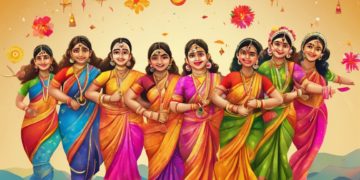Lord Shiva, also known as Mahadev or Bhola Shankar, is one of the principal deities in Hinduism. He is a complex and multifaceted figure, embodying various elements such as destruction and transformation, meditation and asceticism, and compassion and love. Understanding Lord Shiva requires delving into the rich tapestry of myths, symbols, and beliefs surrounding him. In this comprehensive guide, we will explore the significance, symbolism, myths, and worship of Bhola Shankar.
Significance of Lord Shiva
Lord Shiva is a part of the Hindu Trinity, alongside Brahma the creator and Vishnu the preserver. He is often depicted as the destroyer or the transformer, responsible for ending the cycles of creation and rebirth. However, his role in destruction is not malevolent; rather, it is essential for the cycle of regeneration and renewal. Shiva is also considered the supreme ascetic, meditating for eons in the Himalayas and embodying the qualities of mindfulness, detachment, and enlightenment.
Symbols and Iconography
Lord Shiva is typically depicted with a third eye on his forehead, symbolizing wisdom and insight. He wears a crescent moon on his head, representing the cyclical nature of time. Around his neck, he adorns a snake, symbolizing his mastery over fear and death. Shiva’s trident, known as the trishul, symbolizes his power to destroy, create, and preserve. He is often shown with a damaru, a small drum that beats the rhythm of creation.
Myths and Stories
The mythology surrounding Lord Shiva is rich and varied, with countless stories showcasing his diverse attributes. One of the most famous myths is the churning of the ocean (Samudra Manthan), where Shiva drinks the poison Halahala to save the world. Another popular story is the marriage of Shiva and Parvati (Shakti), symbolizing the union of masculine and feminine energies. Shiva’s dance, known as the Tandav, represents the cosmic cycles of creation, preservation, and destruction.
Forms and Avatars
Lord Shiva has many forms and avatars, each representing different aspects of his personality. As Nataraja, the Lord of Dance, he symbolizes the rhythmic movement of the universe. As Ardhanarishvara, the half-male, half-female form, he embodies the duality of existence. Shiva is also worshipped as Pashupati, the lord of animals, and Bhairava, the fierce and terrifying aspect.
Worship and Festivals
Devotees of Lord Shiva worship him with devotion and reverence through daily prayers, offerings of water (abhishekam), and recitation of mantras. Mahashivratri, the Great Night of Shiva, is one of the most important festivals dedicated to the worship of Lord Shiva. It is celebrated with fasting, night-long vigils, and offerings of bael leaves and milk.
Temple and Pilgrimage
There are numerous temples dedicated to Lord Shiva across India and around the world. Some of the most famous Shiva temples include Kashi Vishwanath in Varanasi, Somnath in Gujarat, and Kedarnath in Uttarakhand. Pilgrimage sites like Amarnath Cave, Mount Kailash, and Pashupatinath Temple in Nepal are considered sacred to devotees of Lord Shiva.
Conclusion
In conclusion, Lord Shiva, also known as Bhola Shankar, is a powerful and enigmatic deity in Hindu mythology. His significance as the destroyer, ascetic, and dancer embodies the complex nature of existence and the cycles of life and death. Understanding Lord Shiva requires appreciating his symbolism, myths, and diverse forms, as well as participating in the worship and festivals dedicated to him. May the grace of Bhola Shankar bring wisdom, peace, and liberation to all who seek his blessings.
Frequently Asked Questions (FAQs)
-
Who is Lord Shiva in Hindu mythology?
Lord Shiva is one of the principal deities in Hinduism, representing destruction, meditation, and asceticism. -
What are the symbols associated with Lord Shiva?
Symbols of Lord Shiva include the third eye, crescent moon, snake, trishul, and damaru. -
What are some famous myths and stories about Lord Shiva?
Popular stories include the churning of the ocean, the marriage of Shiva and Parvati, and Shiva’s cosmic dance. -
How is Lord Shiva worshipped by devotees?
Devotees worship Shiva through prayers, offerings, mantras, and festivals like Mahashivratri. -
Where are some famous temples and pilgrimage sites dedicated to Lord Shiva?
Famous temples include Kashi Vishwanath, Somnath, and Kedarnath, while pilgrimage sites include Amarnath Cave and Mount Kailash.










Discussion about this post